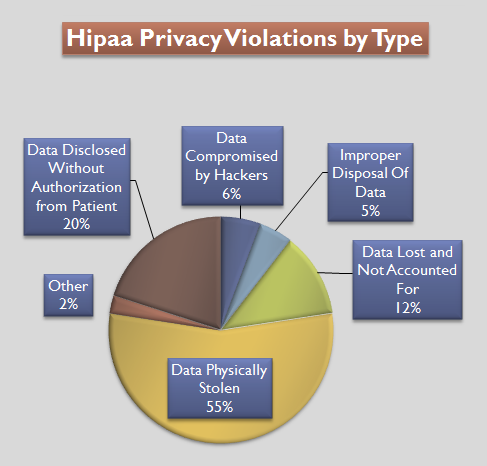|
Electronic Data Interchange
Electronic data interchange (EDI) is the concept of businesses electronically communicating information that was traditionally communicated on paper, such as purchase orders, advance ship notices, and invoices. Technical standards for EDI exist to facilitate parties transacting such instruments without having to make special arrangements. EDI has existed at least since the early 1970s, and there are many EDI standards (including ASC X12, X12, EDIFACT, OFTP, ODETTE, etc.), some of which address the needs of specific industries or regions. It also refers specifically to a family of standards. In 1996, the National Institute of Standards and Technology defined electronic data interchange as "the computer-to-computer interchange of a standardized format for data exchange. EDI implies a sequence of messages between two parties, either of whom may serve as originator or recipient. The formatted data representing the documents may be transmitted from originator to recipient via telecommun ... [...More Info...] [...Related Items...] OR: [Wikipedia] [Google] [Baidu] |
|
|
Technical Standard
A technical standard is an established Social norm, norm or requirement for a repeatable technical task which is applied to a common and repeated use of rules, conditions, guidelines or characteristics for products or related processes and production methods, and related management systems practices. A technical standard includes definition of terms; classification of components; delineation of procedures; specification of dimensions, materials, performance, designs, or operations; measurement of quality and quantity in describing materials, processes, products, systems, services, or practices; test methods and sampling procedures; or descriptions of fit and measurements of size or strength. It is usually a formal document that establishes uniform engineering or technical criteria, methods, processes, and practices. In contrast, a custom, convention, company product, corporate standard, and so forth that becomes generally accepted and dominant is often called a ''de facto'' standar ... [...More Info...] [...Related Items...] OR: [Wikipedia] [Google] [Baidu] |
|
|
GS1 EDI
GS1 EDI is a set of global electronic messaging Technical standard, standards for business documents used in Electronic data interchange, Electronic Data Interchange (EDI). The standards are developed and maintained by GS1. GS1 EDI is part of the overall GS1 system, fully integrated with other GS1 standards, increasing the speed and accuracy of the supply chain. Examples of GS1 EDI standards include messages such as: Order, Despatch Advice (Shipping Notice), Invoice, Transport Instruction, etc. The development and maintenance of all GS1 standards is based on a rigorous process called the Global Standard Management Process (GSMP). GS1 develops its global supply chain standards in partnership with the industries using them. Any organization can submit a request to modify the standard. Maintenance releases of GS1 EDI standards are typically published every two years, while code lists can be updated up to 4 times a year. Standards GS1 developed the following sets of complementary EDI ... [...More Info...] [...Related Items...] OR: [Wikipedia] [Google] [Baidu] |
|
 |
HTTPS
Hypertext Transfer Protocol Secure (HTTPS) is an extension of the Hypertext Transfer Protocol (HTTP). It uses encryption for secure communication over a computer network, and is widely used on the Internet. In HTTPS, the communication protocol is encrypted using Transport Layer Security (TLS) or, formerly, Secure Sockets Layer (SSL). The protocol is therefore also referred to as HTTP over TLS, or HTTP over SSL. The principal motivations for HTTPS are authentication of the accessed website and protection of the privacy and integrity of the exchanged data while it is in transit. It protects against man-in-the-middle attacks, and the bidirectional block cipher encryption of communications between a client and server protects the communications against eavesdropping and tampering. The authentication aspect of HTTPS requires a trusted third party to sign server-side digital certificates. This was historically an expensive operation, which meant fully authenticated HTTPS conn ... [...More Info...] [...Related Items...] OR: [Wikipedia] [Google] [Baidu] |
 |
HTTP
HTTP (Hypertext Transfer Protocol) is an application layer protocol in the Internet protocol suite model for distributed, collaborative, hypermedia information systems. HTTP is the foundation of data communication for the World Wide Web, where hypertext documents include hyperlinks to other resources that the user can easily access, for example by a Computer mouse, mouse click or by tapping the screen in a web browser. Development of HTTP was initiated by Tim Berners-Lee at CERN in 1989 and summarized in a simple document describing the behavior of a client and a server using the first HTTP version, named 0.9. That version was subsequently developed, eventually becoming the public 1.0. Development of early HTTP Requests for Comments (RFCs) started a few years later in a coordinated effort by the Internet Engineering Task Force (IETF) and the World Wide Web Consortium (W3C), with work later moving to the IETF. HTTP/1 was finalized and fully documented (as version 1.0) in 1996 ... [...More Info...] [...Related Items...] OR: [Wikipedia] [Google] [Baidu] |
|
File Transfer Protocol
The File Transfer Protocol (FTP) is a standard communication protocol used for the transfer of computer files from a server to a client on a computer network. FTP is built on a client–server model architecture using separate control and data connections between the client and the server. FTP users may authenticate themselves with a plain-text sign-in protocol, normally in the form of a username and password, but can connect anonymously if the server is configured to allow it. For secure transmission that protects the username and password, and encrypts the content, FTP is often secured with SSL/TLS (FTPS) or replaced with SSH File Transfer Protocol (SFTP). The first FTP client applications were command-line programs developed before operating systems had graphical user interfaces, and are still shipped with most Windows, Unix, and Linux operating systems. Many dedicated FTP clients and automation utilities have since been developed for desktops, servers, mobile d ... [...More Info...] [...Related Items...] OR: [Wikipedia] [Google] [Baidu] |
|
 |
Building Code
A building code (also building control or building regulations) is a set of rules that specify the standards for construction objects such as buildings and non-building structures. Buildings must conform to the code to obtain planning permission, usually from a local council. The main purpose of building codes is to protect public health, safety and general welfare as they relate to the construction and occupancy of buildings and for example, the building codes in many countries require engineers to consider the effects of soil liquefaction in the design of new buildings. The building code becomes law of a particular jurisdiction when formally enacted by the appropriate governmental or private authority. Building codes are generally intended to be applied by architects, engineers, interior designers, constructors and regulators but are also used for various purposes by safety inspectors, environmental scientists, real estate developers, subcontractors, manufacturers of b ... [...More Info...] [...Related Items...] OR: [Wikipedia] [Google] [Baidu] |
|
X12 Document List
The following is a list of all ASC X12 transaction sets across all releases. X12C: Communications and Controls X12F: Finance X12I: Transportation X12M: Supply Chain X12N: Insurance {, class="wikitable" , 100 , Insurance Plan Description , - , 111 , Individual Insurance Policy and Client Information , - , 112 , Property Damage Report , - , 124 , Vehicle Damage , - , 148 , Report of Injury, Illness or Incident , - , 186 , Insurance Underwriting Requirements Reporting , - , 187 , Premium Audit Request and Return , - , 252 , Insurance Producer Administration , - , 255 , Underwriting Information Services , - , 256 , Periodic Compensation , - , 267 , Individual Life, Annuity and Disability Application , - , 268 , Annuity Activity , - , 269 , Health Care Benefit Coordination Verification , - , 270 , Eligibility, Coverage or Benefit Inquiry , - , 271 , Eligibility, Coverage or Benefit Information , - , 272 , Property and Casualty Loss Notification , - , 273 , Insurance/An ... [...More Info...] [...Related Items...] OR: [Wikipedia] [Google] [Baidu] |
|
|
NCPDP SCRIPT
SCRIPT is a standard promulgated by the National Council for Prescription Drug Programs (NCPDP) for the electronically transmitted medical prescriptions in the United States. Adoption The first version of SCRIPT was approved in 1997. Version 8.1 was proposed as a federal rule by the Centers for Medicare and Medicaid Services (CMS) in November 2007 and adopted in 2008, thereby mandating its use for medical providers that used electronic subscriptions, in order to obtain federal insurance reimbursement. A new "backwards-compatible" version, 10.1, was adopted by the Surescripts pharmacy consortium in late 2009 to facilitate member participation in the electronic medical record incentive programs under the HITECH Act The Health Information Technology for Economic and Clinical Health Act, abbreviated the HITECH Act, was enacted under Title XIII of the American Recovery and Reinvestment Act of 2009 (). Under the HITECH Act, the United States Department of Health .... It was propos ... [...More Info...] [...Related Items...] OR: [Wikipedia] [Google] [Baidu] |
|
 |
IATA Cargo-IMP
The International Air Transport Association (IATA ) is an airline trade association founded in 1945. IATA has been described as a cartel since, in addition to setting technical standards for airlines, IATA also organized tariff conferences that served as a forum for price fixing. According to IATA, the trade association represents 317 airlines, including major carriers, from over 120 countries. The IATA's member airlines account for carrying approximately 82% (2020) of total available seat miles air traffic. IATA supports airline activity and helps formulate industry policy and standards. It is headquartered in Montreal, Canada, with executive offices in Geneva, Switzerland. History IATA was formed in April 1945 in Havana, Cuba. It is the successor to the International Air Traffic Association, which was formed in 1919 at The Hague, Netherlands. At its founding, IATA consisted of 57 airlines from 31 countries. Much of IATA's early work was technical and IATA provided input to ... [...More Info...] [...Related Items...] OR: [Wikipedia] [Google] [Baidu] |
 |
Health Insurance Portability And Accountability Act
The Health Insurance Portability and Accountability Act of 1996 (HIPAA or the Ted Kennedy, Kennedy–Nancy Kassebaum, Kassebaum Act) is a United States Act of Congress enacted by the 104th United States Congress and signed into law by President Bill Clinton on August 21, 1996. It aimed to alter the transfer of healthcare information, stipulated the guidelines by which personally identifiable information maintained by the healthcare and healthcare insurance industries should be protected from fraud and theft, and addressed some limitations on Health insurance in the United States, healthcare insurance coverage. It generally prohibits Health professional, healthcare providers and businesses called covered entities from disclosing protected information to anyone other than a patient and the patient's authorized representatives without their consent. The bill does not restrict patients from receiving information about themselves (with limited exceptions). Furthermore, it does not proh ... [...More Info...] [...Related Items...] OR: [Wikipedia] [Google] [Baidu] |
|
HL7 Services Aware Interoperability Framework
This article documents the effort of the Health Level Seven(HL7) community and specifically the former HL7 Architecture Board (ArB) to develop an interoperability framework that would support services, messages, and Clinical Document Architecture(CDA) ISO 10871. HL7 provides a framework and standards for the exchange, integration, sharing, and retrieval of electronic health information. SAIF Overview The HL7 Services-Aware Interoperability Framework Canonical Definition (SAIF-CD) provides consistency between all artifacts, and enables a standardized approach to enterprise architecture (EA) development and implementation, and a way to measure the consistency. SAIF is a way of thinking about producing specifications that explicitly describe the governance, conformance, compliance, and behavioral semantics that are needed to achieve computable semantic working interoperability. The intended information transmission technology might use a messaging, document exchange, or service ... [...More Info...] [...Related Items...] OR: [Wikipedia] [Google] [Baidu] |
|
 |
United Kingdom
The United Kingdom of Great Britain and Northern Ireland, commonly known as the United Kingdom (UK) or Britain, is a country in Northwestern Europe, off the coast of European mainland, the continental mainland. It comprises England, Scotland, Wales and Northern Ireland. The UK includes the island of Great Britain, the north-eastern part of the island of Ireland, and most of List of islands of the United Kingdom, the smaller islands within the British Isles, covering . Northern Ireland shares Republic of Ireland–United Kingdom border, a land border with the Republic of Ireland; otherwise, the UK is surrounded by the Atlantic Ocean, the North Sea, the English Channel, the Celtic Sea and the Irish Sea. It maintains sovereignty over the British Overseas Territories, which are located across various oceans and seas globally. The UK had an estimated population of over 68.2 million people in 2023. The capital and largest city of both England and the UK is London. The cities o ... [...More Info...] [...Related Items...] OR: [Wikipedia] [Google] [Baidu] |